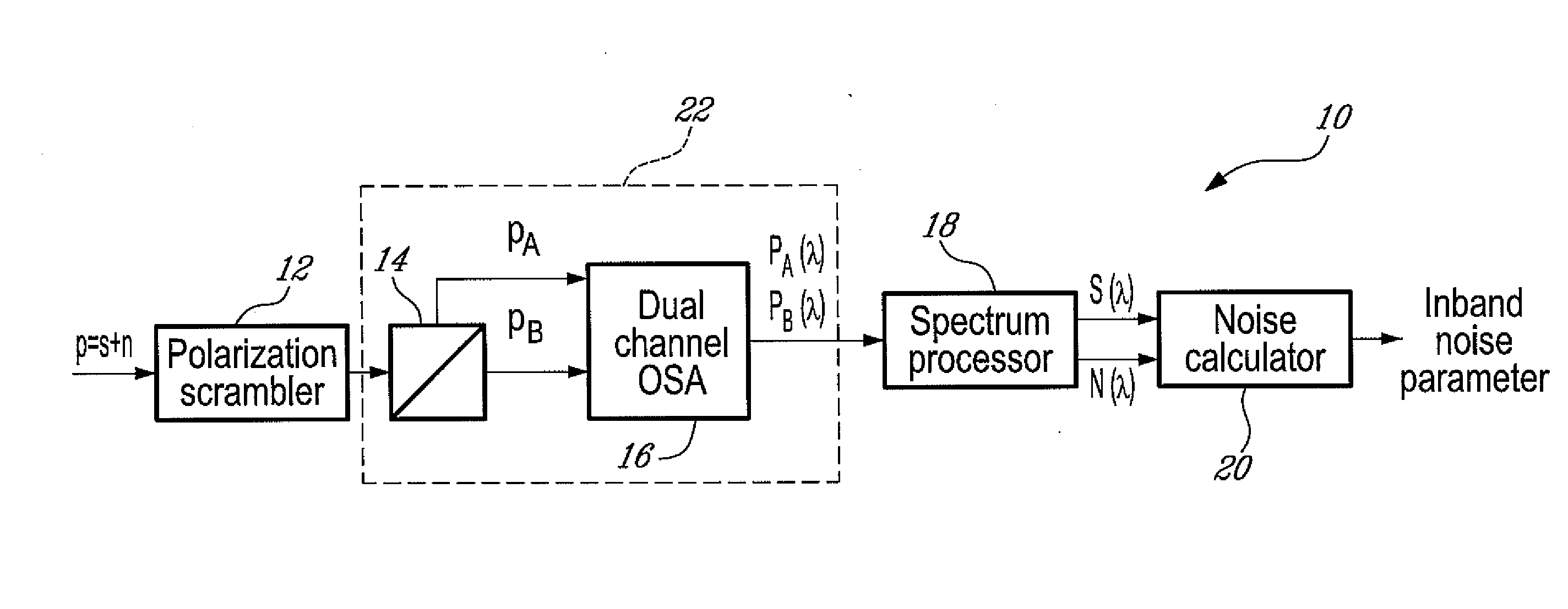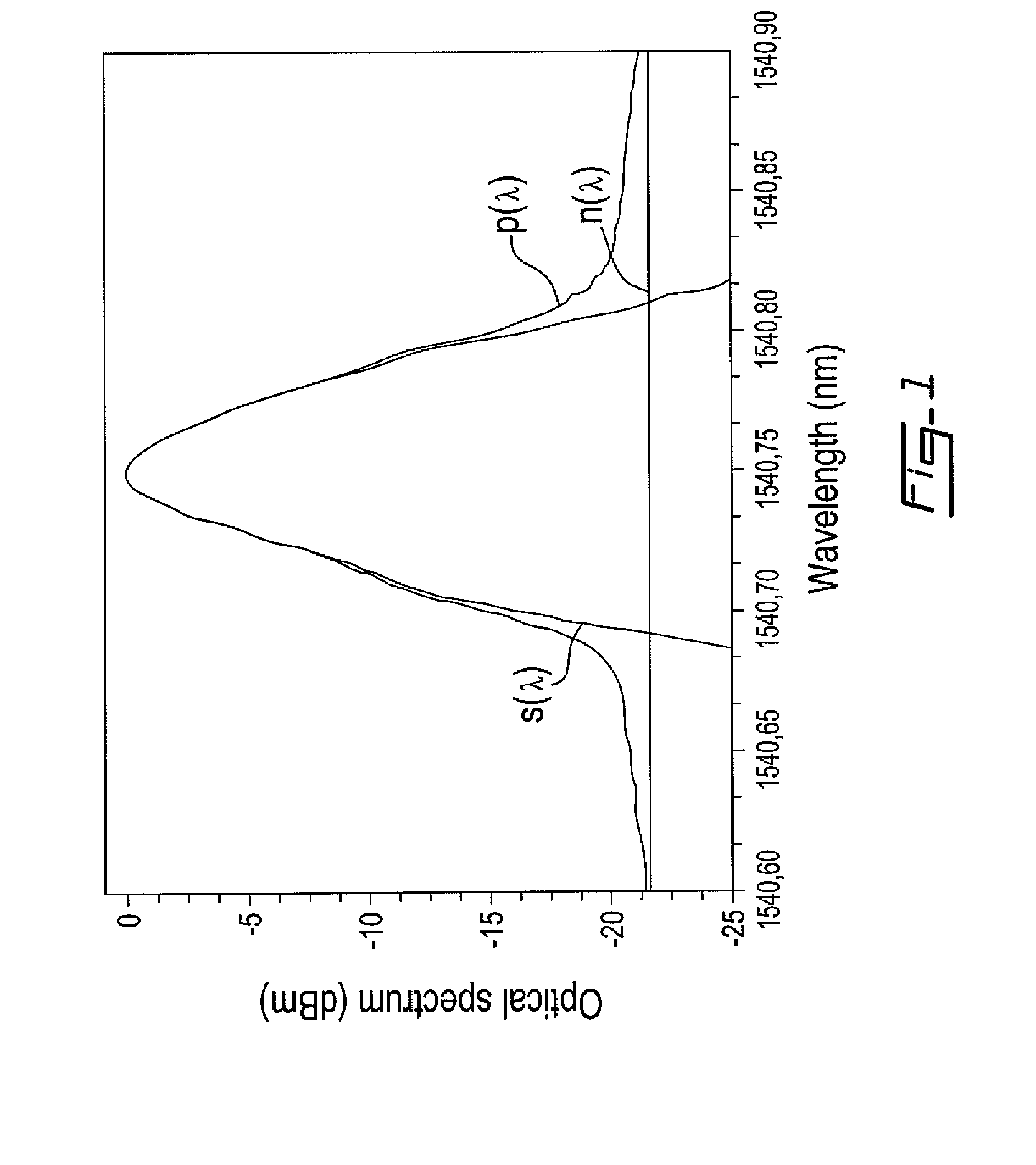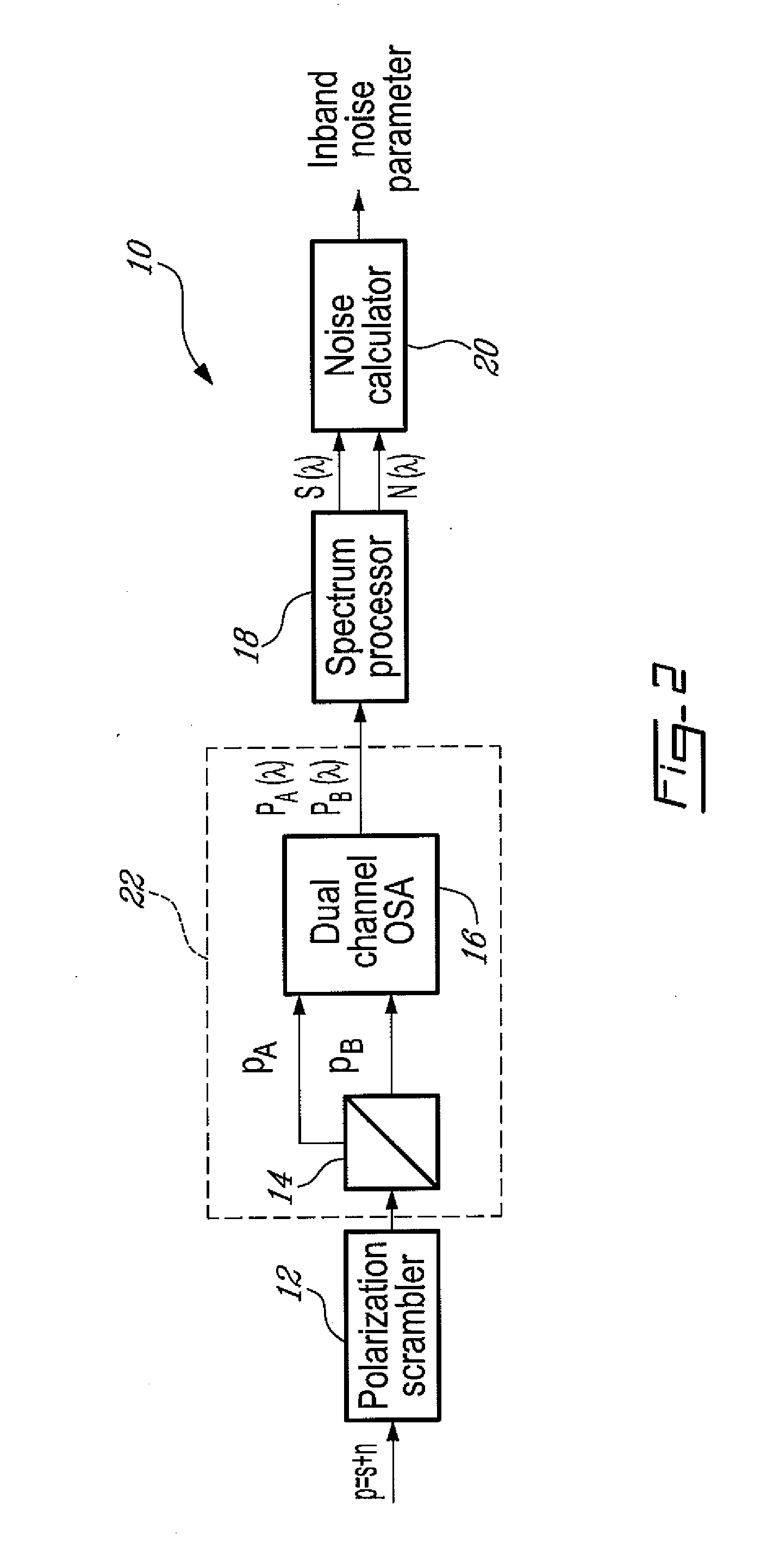In-band optical noise measurement using differential polarization response
a technology of differential polarization response and in-band optical noise, which is applied in the direction of electrical equipment, electrical transmission, transmission monitoring, etc., can solve the problems of increasing the difficulty of achieving a reliable measurement of the noise level within the channel bandwidth, severe spectral characteristics requirements, and increasing difficulty in achieving reliable measurement of the noise level in the channel bandwidth. , to achieve the effect of less stringent requirements and significant reduction of measurement tim
- Summary
- Abstract
- Description
- Claims
- Application Information
AI Technical Summary
Benefits of technology
Problems solved by technology
Method used
Image
Examples
Embodiment Construction
[0041]Now referring to FIG. 1, the methods and systems described herein relate to the characterization of an optical signal p which is used in optical telecommunications to transmit data over a Dense Wavelength Division Multiplexing (DWDM) optical channel. Throughout the present description, the optical signal p corresponds to one of the DWDM optical channels. In the optical channel bandwidth of interest, the optical signal p includes two components, i.e. a signal contribution s arising from the data-carrying signal, and a noise contribution n which includes all other sources of optical power within the optical channel. The noise contribution n arises mostly from the Amplified Spontaneous Emission (ASE) noise of the optical amplifiers in the optical transmission system. FIG. 1 shows the optical spectrum p(λ) of an example optical signal p, along with the optical spectrum of its signal contribution s(λ) and the optical spectrum of its noise contribution n(λ), such that:
p(λ)=s(λ)+n(λ)...
PUM
 Login to View More
Login to View More Abstract
Description
Claims
Application Information
 Login to View More
Login to View More - R&D
- Intellectual Property
- Life Sciences
- Materials
- Tech Scout
- Unparalleled Data Quality
- Higher Quality Content
- 60% Fewer Hallucinations
Browse by: Latest US Patents, China's latest patents, Technical Efficacy Thesaurus, Application Domain, Technology Topic, Popular Technical Reports.
© 2025 PatSnap. All rights reserved.Legal|Privacy policy|Modern Slavery Act Transparency Statement|Sitemap|About US| Contact US: help@patsnap.com



